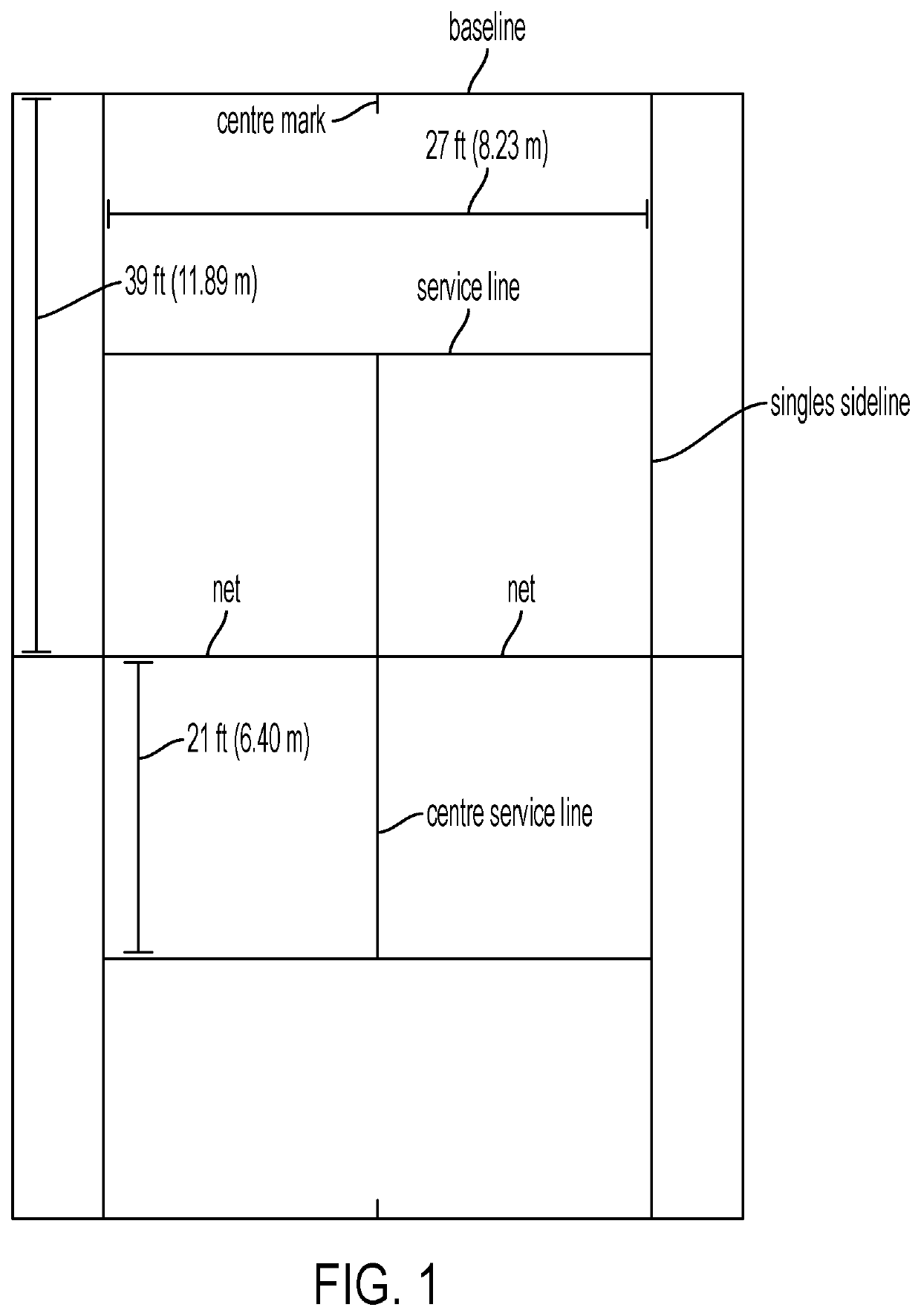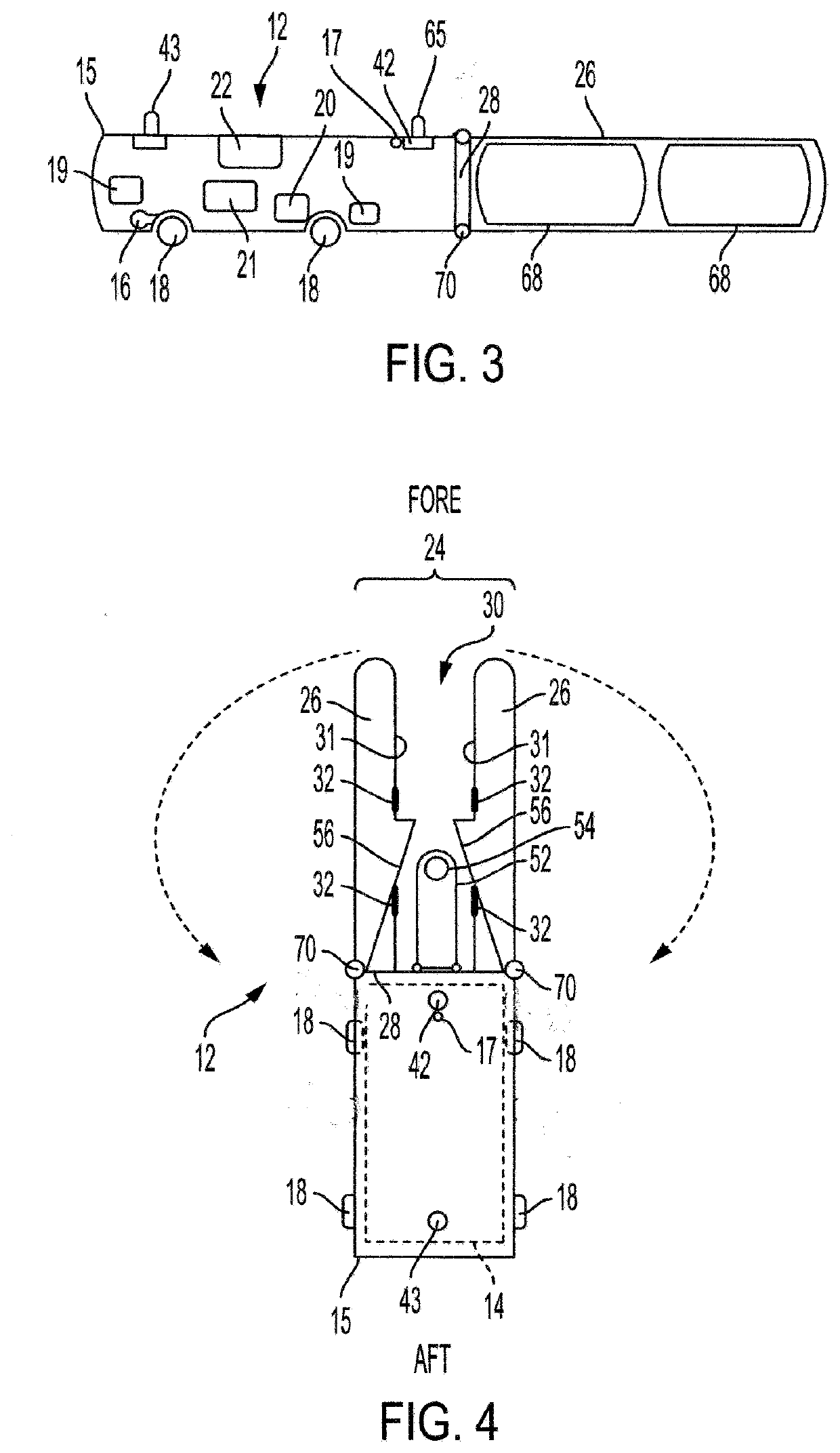Ball retrieval system and method
a sports playing surface and ball retrieval technology, applied in the field of ball retrieval system and method, can solve the problems of slowing down the pace, reducing the useful operating time of the retriever, and not allowing players, so as to facilitate play, improve the useful operating time of the retriever, and improve the energy efficiency
- Summary
- Abstract
- Description
- Claims
- Application Information
AI Technical Summary
Benefits of technology
Problems solved by technology
Method used
Image
Examples
example 1
[0124]A retriever 12 was built by modifying an off-the-shelf Simrex A130 1 / 16 scale 2-wheel drive RC remote control off-road truck, with a ball collector 24 mounted thereon including opposing blades 26. The retriever was tested on a hard-court surface, successfully collecting balls at the net as well as in areas away from the net and releasing the balls toward the center service-mark on the baseline. A number of different blade configurations were thus tested in order to define and refine blade parameters such as length, contours, optimal sensor placements, and passive detent configuration and the like, to finalize the design parameters for the 3D-printed prototype blades (“test blades”).
[0125]The test blades 26 were fabricated as mirror-image structures of one another using an AutoCAD-programmed 3D-printing process employing acrylonitrile butadiene styrene (ABS) polymer, to the following specifications:
Description / DrawingDescription (“L” = length, “W” = width,Ref. Num.“D” = depth)...
example 2
[0127]The operating characteristics of the test blades were first studied by securing the blades in a) a stationary, fixed position and b) a rotatable position, and directing tennis balls at and into the test blades at varying angles and varying ball velocities, while video-recording the tests and studying the test blade performance frame-by-frame. Balls were fed through a 3″ ID 10′ length PVC pipe fitted within a 4″ ID 10′ length PVC pipe to provide both flexibility in varying ball velocity and to permit balls (≈2.7″ diameter) to freely exit the angled 4″ pipe opening. The pipes were set at differing heights at the feed end to produce varying ball exit velocities, from 3 ft / s to 10 ft / s.[0128](a) Stationary tests: tennis balls at higher velocities were captured effectively notwithstanding some bouncing off the fore spar. Lower velocity retrievals were routine.[0129](b) Rotating tests: the retriever was rotated upon a ball rolling past the fore sensor 32 slots at both higher and low...
PUM
 Login to View More
Login to View More Abstract
Description
Claims
Application Information
 Login to View More
Login to View More - R&D
- Intellectual Property
- Life Sciences
- Materials
- Tech Scout
- Unparalleled Data Quality
- Higher Quality Content
- 60% Fewer Hallucinations
Browse by: Latest US Patents, China's latest patents, Technical Efficacy Thesaurus, Application Domain, Technology Topic, Popular Technical Reports.
© 2025 PatSnap. All rights reserved.Legal|Privacy policy|Modern Slavery Act Transparency Statement|Sitemap|About US| Contact US: help@patsnap.com



